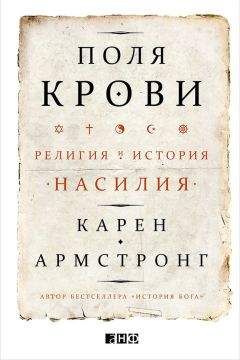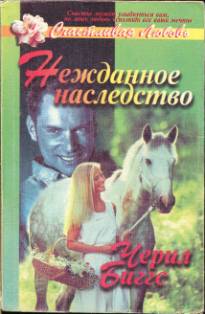Карен Армстронг - Поля крови. Религия и история насилия

Помощь проекту
Поля крови. Религия и история насилия читать книгу онлайн
1477
Willem M. Floor, ‘The Revolutionary Character of the Ulama: Wishful Thinking or Reality’, in Keddie, ed. Religion and Politics in Iran, Appendix, p. 97
1478
Хамид Алгар. «Смешение мистического и политического в личности и судьбе имама Хомейни»: лекция, прочитанная в Школе востоковедения и африканистики Лондонского университета (Лондон, 9 июня 1998 г.).
1479
John XXIII, Mater et Magistra, ‘Christianity and Social Progress’, in Claudia Carlen, ed., The Papal Encyclicals, 1740–1981, 5 vols (Falls Church, Va., 1981), 5, pp. 63–64
1480
Camilo Torres, ‘Latin America: Lands of Violence’, in J. Gerassi, ed., Revolutionary Priest: The Complete Writings and Messages of Camilo Torres (New York, 1971), pp. 422–23
1481
Thia Cooper, ‘Liberation Theology and the Spiral of Violence’, in Andrew R. Murphy, ed., The Blackwell Companion to Religion and Violence (Chichester, UK, 2011), pp. 543–55
1482
Andrew Preston, Sword of the Spirit, Shield of Faith: Religion in American War and Diplomacy (New York, 2012), pp. 502–2
1483
Ibid., p. 510
1484
Martin Luther King, Jr., Strength to Love (Philadelphia, 1963), p. 50
1485
Keddie, Roots of Revolution, pp. 282–83; Borujerdi, Iranian Intellectuals, pp. 29–42
1486
Akhavi, Religion and Politics in Contemporary Iran, pp. 129–31
1487
Algar, ‘Oppositional Role of the Ulema’, p. 251
1488
Keddie, Roots of Revolution, pp. 215–59; Sharough Akhavi, ‘Shariati’s Social Thought’, in Keddie, Religion and Politics in Iran; Abdulaziz Sachedina, ‘Ali Shariati: Ideologue of the Islamic Revolution, ’ in Esposito, ed., Voices of Resurgent Islam; Michael J. Fischer, Iran: From Religious Dispute to Revolution (Cambridge, Mass., and London, 1980), pp. 154–67; Borujerdi, Iranian Intellectuals, pp. 106–15
1489
Sayeed Ruhollah Khomeini, Islam and Revolution, trans. and ed. Hamid Algar (Berkeley, 1981), p. 28
1490
Keddie, Roots of Revolution, p. 242; Fischer, Iran, p. 193
1491
Gary Sick, All Fall Down: America’s Fateful Encounter with Iran (London, 1985), p. 30
1492
Keddie, Roots of Revolution, p. 243
1493
Fischer, Iran, p. 195
1494
Momen, Introduction to Shii Islam, p. 288
1495
Fischer, Iran, p. 184
1496
Momen, Introduction to Shii Islam, p. 288
1497
Fischer, Iran, pp. 198–99
1498
Ibid., p. 199; Sick, All Fall Down, p. 51; Keddie, Roots of Revolution, p. 250. По правительственным сводкам, погибло лишь 120 демонстрантов, а 2000 получили ранения. Другие источники называют цифру от 500 до 1000 погибших.
1499
Fischer, Iran, p. 204
1500
Ibid., p. 205; Keddie (Roots of Revolution, pp. 252–53), однако, считает, что участвовало около миллиона человек.
1501
Amir Taheri, The Spirit of Allah: Khomeini and the Islamic Revolution (London, 1985), p. 227
1502
Baqir Moin, Khomeini: Life of the Ayatollah (London, 1999), pp. 227–28
1503
Daniel Brumberg, ‘Khomeini’s Legacy: Islamic Rule and Islamic Social Justice’, in R. Scott Appleby, ed., Spokesmen for the Despised: Fundamentalist Leaders of the Middle East (Chicago, 1997)
1504
Joos R. Hiltermann, A Poisonous Affair: America, Iraq and the Gassing of Halabja (Cambridge, 2007), pp. 22–36
1505
Homa Katouzian, ‘Shiism and Islamic Economics: Sadr and Bani Sadr’, in Keddie, ed., Religion and Politics in Iran, pp. 161–62.
1506
Michael J. Fischer, ‘Imam Khomeini: Four Levels of Understanding’, in Esposito, ed., Voices of Resurgent Islam, p. 171
1507
Sick, All Fall Down, p. 165
1508
Hannah Arendt, On Revolution (New York, 1963), p. 18 (Арендт Х. О революции. – М.: Европа, 2011.)
1509
Kautsky, Political Consequences of Modernisation, pp. 60–127.
1510
William Beeman, ‘Images of the Great Satan: Representations of the United States in the Iranian Revolution’, in Keddie, ed., Religion and Politics in Iran, p. 215
1511
Rebecca Moore, ‘Narratives of Persecution, Suffering and Martyrdom: Violence in the People’s Temple and Jonestown’, in James R. Lewis, ed., Violence and New Religious Movements (Oxford, 2011); Moore, ‘America as Cherry-Pie: The People’s Temple and Violence’, in Catherine Wessinger, ed., Millennialism, Persecution and Violence: Historical Circumstances (Syracuse, NY, 1986); Wessinger, How the Millennium Comes Violently: Jonestown to Heaven’s Gate (New York, 2000); Mary Maaga, Hearing the Voices of Jonestown (Syracuse, NY, 1998)
1512
Moore, ‘Narratives of Persecution’, p. 102
1513
Ibid., p. 103
1514
Huey Newton, Revolutionary Suicide (New York, 1973) (Ньютон Х. Революционное самоубийство. – Екатеринбург: Ультракультура, 2003.)
1515
Moore, ‘Narratives of Persecution’, p. 106
1516
Ibid., p. 108
1517
Ibid., p. 110
1518
George Steiner, In Bluebeard’s Castle: Some Notes toward the Re-definition of Culture (New Haven, Conn., 1971), p. 3
1519
Zygmunt Bauman, Modernity and the Holocaust (Ithaca, NY, 1989), pp. 77–92
1520
Joanna Bourke, ‘Barbarisation vs. Civilisation in Time of War’, in George Kassimeris, ed., The Barbarisation of Warfare (London, 2006), p. 26
1521
Amir Taheri, The Spirit of Allah: Khomeini and the Islamic Revolution (London, 1985), p. 85
1522
Michael Barkun, Religion and the Racist Right: The Origins of the Christian Identity Movement (Chapel Hill, 1994)
1523
Ibid., pp. 107, 109; возможно, всего лишь 50 тысяч членов.
1524
Ibid., p. 213
1525
William T. Cavanaugh, The Myth of Religious Violence (Oxford, 2009), pp. 34–35
1526
C. Gearty, ‘Introduction’, in Gearty, ed., Terrorism (Aldershot, 1996), p. xi
1527
C. Gearty, ‘What is Terror? ’ in Gearty, Terrorism, p. 495; A. Guelke, The Age of Terrorism and the International Political System (London, 2008), p. 7
1528
Richard English, Terrorism: How to Respond (Oxford, 2009), pp. 19–20
1529
A. H. Kydd and B. F. Walter, ‘The Stratagems of Terrorism’, International Security, 31, 1 (Summer, 2006)
1530
P. Wilkinson, Terrorism versus Democracy: The Liberal State Response (London, 2001), pp. 19, 41; Mark Juergensmeyer, Terror in the Mind of God: The Global Rise of Religious Violence (Berkeley, 2001), p. 5; J. Horgan, The Psychology of Terrorism (London, 2005), p. 12; English, Terrorism, p. 6
1531
Hugo Slim, ‘Why Protect Civilians? Innocence, Immunity and Enmity in War’, International Affairs, 79, 3 (2003)
1532
Bruce Hoffman, Inside Terrorism (London, 1998), p. 14 (Хоффман Б. Терроризм – взгляд изнутри. – Екатеринбург: Ультракультура, 2003.); C. C. Harmon, Terrorism Today (London, 2008), p. 7; D. J. Whittaker, ed., The Terrorist Reader (London, 2001), p. 9.
1533
Harmon, Terrorism Today, p. 160
1534
Martha Crenshaw, ‘Reflections on the Effects of Terrorism’, in M. Crenshaw, ed., Terrorism, Legitimacy, and Power: The Consequences of Political Violence (Middletown, Conn., 1983), p. 25
1535
Richard Dawkins, The God Delusion (London, 2007), p. 132 (Докинз Р. Бог как иллюзия. – М.: КоЛибри, 2015.)
1536
Cavanaugh, Myth of Religious Violence, pp. 24–54
1537
Muhammad Heikal, Autumn of Fury: The Assassination of Sadat (London, 1984), pp. 94–96.
1538
Gilles Kepel, The Prophet and Pharaoh: Muslim Extremism in Egypt, trans. Jon Rothschild (London, 1985), p. 85
1539
Fedwa El Guindy, ‘The Killing of Sadat and After: A Current Assessment of Egypt’s Islamic Movement’, Middle East Insight 2 (January – February 1982).
1540
Kepel, Prophet and Pharaoh, pp. 70–102
1541
Ibid., pp. 152–59
1542
Ibid., pp. 158–59
1543
Patrick D. Gaffney, The Prophet’s Pulpit: Islamic Preaching in Contemporary Egypt (Berkeley, Los Angeles and London, 1994), pp. 97–101
1544
Heikal, Autumn of Fury, pp. 118–19
1545
Ibid., pp. 141–42
1546
Johannes J. G. Jansen, The Neglected Duty: The Creed of Sadat’s Assassins and Islamic Resurgence in the Middle East (New York and London, 1988), pp. 49–88
1547
Ibid., p. 169
1548
Ibid., p. 166
1549
Wilfred Cantwell Smith, Islam in Modern History (Princeton and London, 1957), p. 241
1550
Ibid., pp. 90, 198
1551
Ibid., pp. 90, 198, 201–02
1552
English, Terrorism, p. 51
1553
Abdulaziz A. Sachedina, ‘Activist Shi’ism in Iran, Iraq and Lebanon’, in Martin E. Marty and R. Scott Appleby, eds, Fundamentalisms Observed (Chicago and London, 1991), p. 456
1554
Alastair Crooke, Resistance: The Essence of the Islamist Revolution (London, 2009), p. 173
1555
Martin Kramer, ‘Hizbollah: The Calculus of Jihad’, in Martin E. Marty and R. Scott Appleby, eds, Fundamentalisms and the State (Chicago and London, 1993), pp. 540–41
1556
Sheikh Muhammad Fadl Allah, Al-Islam wa Muntiq al Quwwa (Beirut, 1976); trans. Crooke, Resistance, p. 173
1557
Kramer, ‘Hizbollah’, p. 542
1558
Sachedina, ‘Activist Shi’ism’, p. 448
1559
Интервью с Фадл-аллахом газете «Кайхан» (14 ноября 1985 г.); см.: Kramer, ‘Hizbollah’, p. 551
1560
Выступление Фадл-аллаха в газете «Аль-Нахар» (14 мая 1985 г.); см.: Kramer, ‘Hizbollah’, p. 550
1561
Kramer, ‘Hizbollah’, pp. 548–49; Ariel Meroni, ‘The Readiness to Kill or Die: Suicide Terrorism in the Middle East’, in Walter Reich, ed., The Origins of Terrorism (Cambridge, UK, 1990), pp. 204–05
1562
Crooke, Resistance, pp. 175–76
1563
Интервью Фадл-аллаха газете «Аль-Шира» (18 марта 1985 г.); Kramer, ‘Hizbollah’, pp. 552–53
























